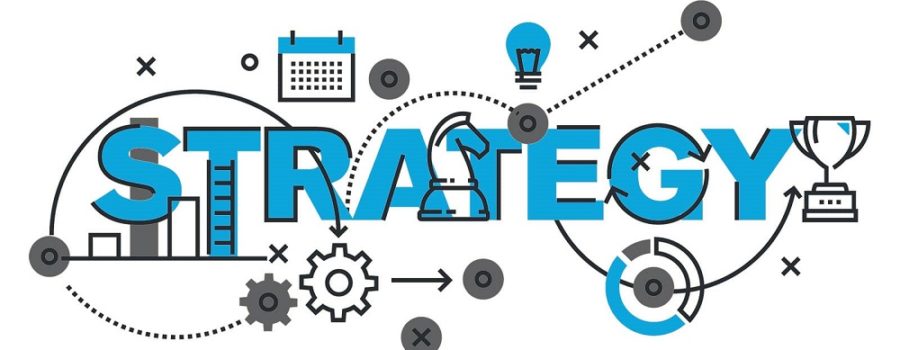Developing a volunteer strategy provides a framework to build a strong and sustainable volunteering culture within your organisation.
Through the development of a volunteer strategy, you are able to align the involvement of volunteers with the strategic direction of your organisation. A volunteer strategy conveys your philosophy and vision regarding volunteers and clarifies why your organisation engages them. Furthermore, it is also a demonstration to stakeholders that volunteers are valued through their contribution towards organisational strategic objectives.
Additionally, a volunteer strategy can provide the means for your organisation to respond to emerging trends in volunteerism, identify future opportunities, promote best practice and ensure your volunteer program is responsive to the needs of your organisation and its volunteers.
How to develop a Volunteer Strategy
There are numerous approaches to develop a volunteer strategy. Here is one to consider:
Phase 1: Data collection
The purpose of this first phase is to gain a clear picture of the current state of volunteering in your organisation. Activities to undertake during this phase include compiling volunteer data and a volunteer survey.
Examples of the data to collect include:
- Volunteer statistics: Number of active volunteers, volunteer tenure, roles performed, tasks undertaken, departments supported, percentage of volunteers who undertake multiple roles.
- Volunteer demographics: Percentage against age ranges, gender, motivation for volunteering.
- Volunteer impact: The volunteer contribution to the organisation and the community (e.g. number of trees planted, animals fostered etc.) and how many hours have been volunteered.
- Volunteer view: How do your volunteers rate their experience? Would they recommend others volunteer with your organisation? Do they feel they receive adequate support and recognition? What reasons do volunteers resign from your organisation? What impact does their volunteering have on them personally?
- Peak times of need: Are there peaks and troughs throughout the year where the organisation requires volunteer support?
- Current partnerships: This may include corporate volunteering and other partnerships which directly impact the engagement with volunteers. What benefits do the partnerships bring to the organisation and what is the current agreement?
Phase 2: Where are we now?
The second phase involves setting the direction and identifying priority issues. Activities to undertake during this phase include analysing the data gathered from the first phase, researching emerging trends in volunteering and best practice as well as accessing industry intelligence.
Using the information gathered in phase one it can beneficial to:
- Develop personas of your volunteers: This can improve your understanding of some of the key characteristics of different types of volunteers. This knowledge can inform recruitment decisions and have a positive impact on volunteer retention and satisfaction.
- Determine themes: Example themes may include attracting and retaining the right volunteers, volunteer connectivity and engagement, partnerships, building capacity and leveraging technology.
- Emerging trends: Identify opportunities at your organisation where emerging trends in volunteering could be applied.
- Strengths and weaknesses: Identify strengths and weaknesses in your current engagement of volunteers to determine priority issues.
- Global challenges: Consider global challenges in volunteering and if they are relevant for your organisation. Are there any challenges working with volunteers which are specific to your organisation?
Phase 3: Aligning to organisational goals
The purpose of the third phase is to understand the organisational strategic direction and to engage with key stakeholders. The aim is to align volunteer involvement with the organisation’s strategic direction. Activities to undertake during this phase include reviewing the organisation’s strategic and annual plans to identify where and how volunteers can add value. A useful way to conduct this review is through workshops with key stakeholders.
In these workshops priorities can be validated and issues or gaps identified. This will assist with developing actions to bridge the gap between the current volunteer program and the desired future state. Additionally, this process can identify potential areas where current volunteer involvement; while positive; might not be directly aiding the achievement of the organisation’s strategy and goals. This is a critical assessment to make to continually ensure your volunteers are contributing in the most effective way.
Tips for running engagement workshops include:
- Collaboration: Ensure you have a combination of volunteers and staff at each workshop.
- Representation: Provide opportunities for volunteers from each role and persona to be involved to ensure different views are captured.
- Themes: Focus workshops on specific themes which have emerged and invite key stakeholders to participate e.g. if partnerships is a theme, invite staff and volunteers who interact with current partners such as corporate volunteers.
Phase 4: Closing the gap between current state and future state
The fourth phase involves using the information gathered from the first three phases to develop the volunteer strategy.
Important components to consider including in the volunteer strategy include:
- Process: Explain the process you took to develop the strategy.
- Who your volunteers are: Using the data compiled in phase one share infographics which present your volunteer statistics, demographics and personas.
- Priority themes: What themes have emerged and why are they important to the success of the volunteer program and the overall strategic direction of the organisation?
- A vision statement: What does the future of volunteering at your organisation look like?
- Volunteer Strategy deliverables: Include actions, outcomes, measures and timelines which will bridge the gap between the current state and the desired future state.
- Volunteer stories: Include quotes from volunteers and share stories about volunteer experiences, roles and the impact of their contribution.
A volunteer strategy is a vehicle to guide your volunteering activities to ensure your resources are being applied in a manner which actively contributes to the achievement of organisational strategic outcomes. Does your organisation have a Volunteer Strategy? Please share the approach you took and your experience.


6 Comments
Leave your reply.